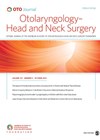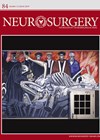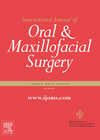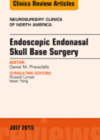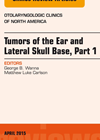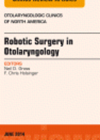
Journal Reviews
Does middle turbinate resection affect olfaction in endoscopic transsphenoidal surgery?
The middle turbinates (MT) are sometimes partially resected during endoscopic transnasal transsphenoidal pituitary surgery to improve surgical access. Some outfracture the middle turbinates instead. This article presents results of the first prospective randomised study, investigating the effects of such surgery...
Recovery room cortisol to predict long-term glucocorticoid supplementation
The authors report the results of using recovery room (RR) cortisol to predict the need for long-term glucocorticoids in patients who underwent transsphenoidal surgery (TSS). They conducted a retrospective study of preoperative morning serum cortisol (MSC), RR cortisol and day...
Keep the condyle if you can
This is a study of 41 patients who underwent benign tumour resection and reconstruction over a four year period. Patients fell into three groups; condyle preserved, condyle sacrificed, condyle frozen in combination with a DCIA free flap. Following this, they...
Paediatric pituitary surgery - is it lagging behind?
Endoscopic sellar surgery, especially for adenomas, is a relatively safe, straightforward surgery with (mostly) reproducible results and few complications. However, the evolution of pituitary surgery was a long process, starting from open/transfrontal approaches all the way to transsphenoid to the...
How should I excise sinonasal tumours, open or endoscopic? En bloc or piecemeal?
Sinonasal tumours often present late because initial symptoms mimic benign disease. They tend to produce more unilateral nasal symptoms, and patients with advance disease often describe paraesthesia and other cranial neuropathies. They only account for approximately 3% of upper aerodigestive...
When ears go bad
Whilst rare, squamous cell carcinoma is the commonest primary malignancy of the temporal bone and is discussed in this review article. This tumour frequently presents with otalgia, ottorhoea and hearing loss; less commonly, with facial palsy or parotid mass. Investigations...
What are the best minimal surgical techniques used for concha bullosa?
This prospective endoscopic and radiologic evaluation studied 42 patients who underwent concha bullosa surgery, amounting to a total of 55 conchae surgeries. The patients were allocated consecutively to either of the two groups. The presurgical and one year postsurgical endoscopic...
In the future there will be robots
This edition of review articles encompasses the emerging techniques of robotic surgery, written by international experts from centres that are increasing their repertoire of procedures. The treatment of oropharyngeal cancer is challenging irrespective of modality, as oncological and functional outcomes...

